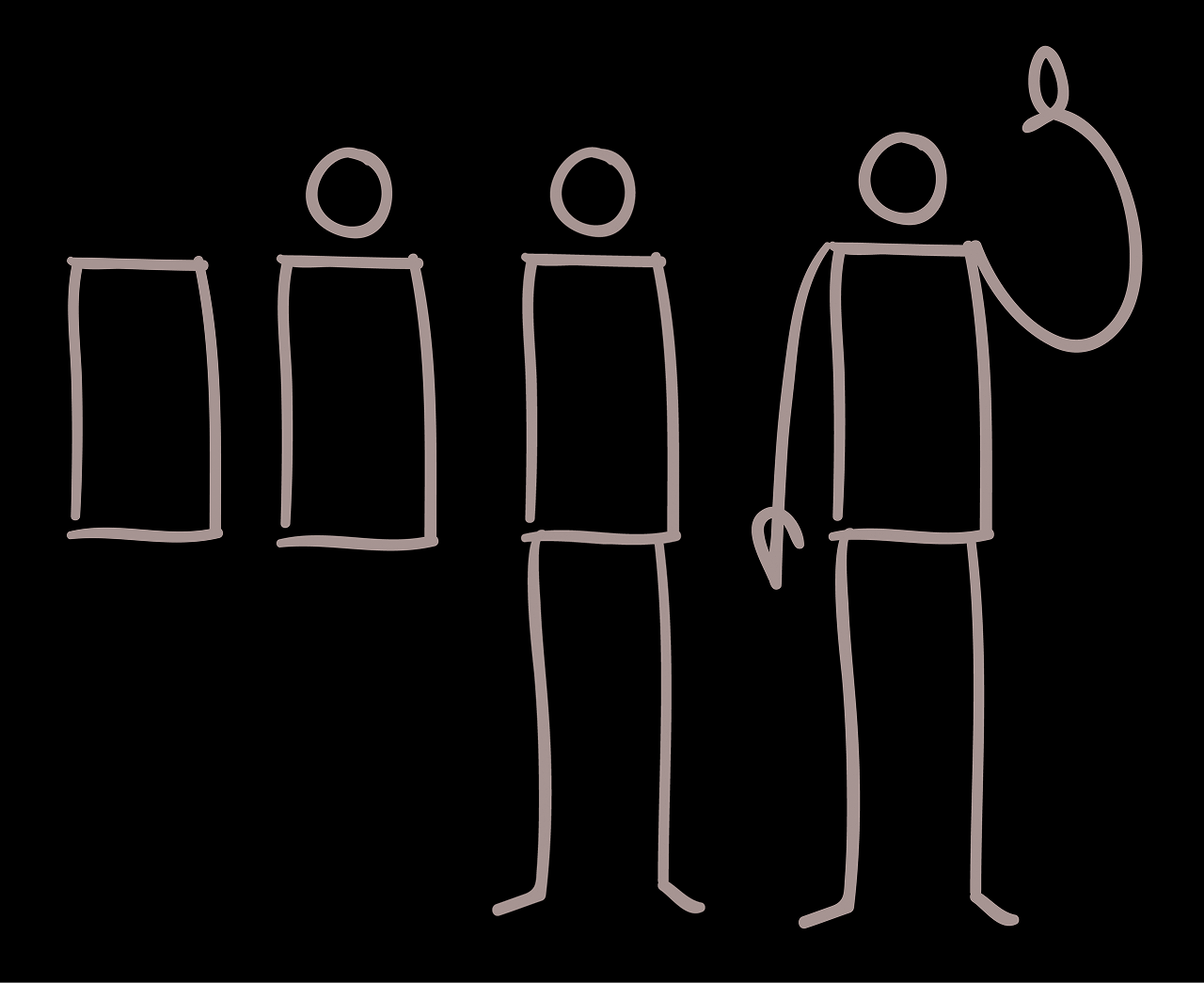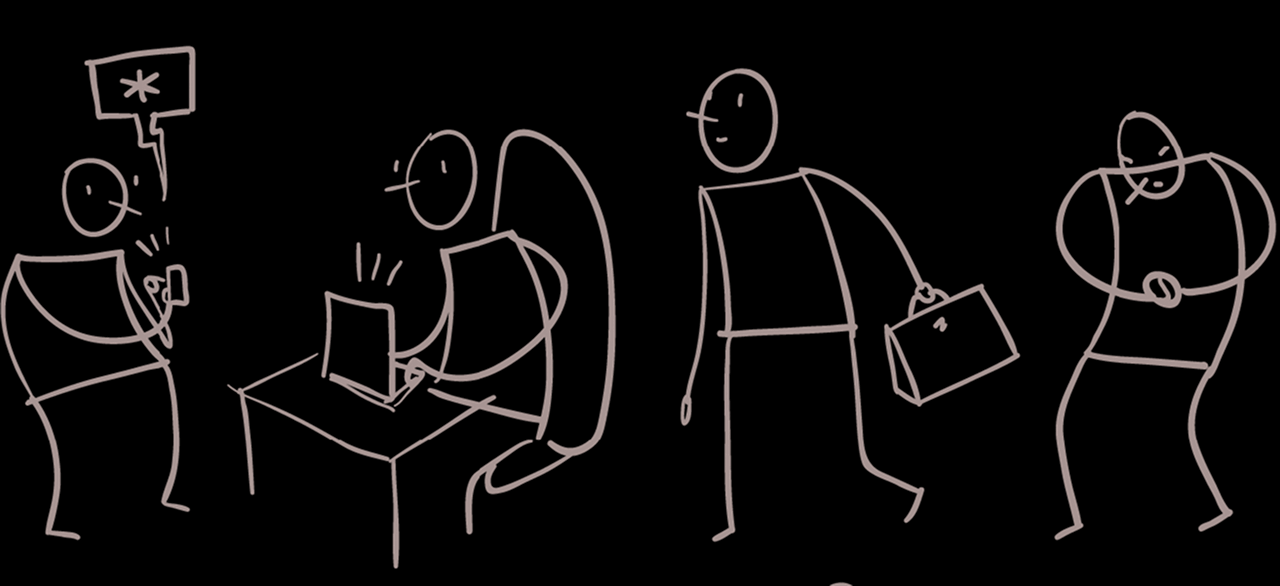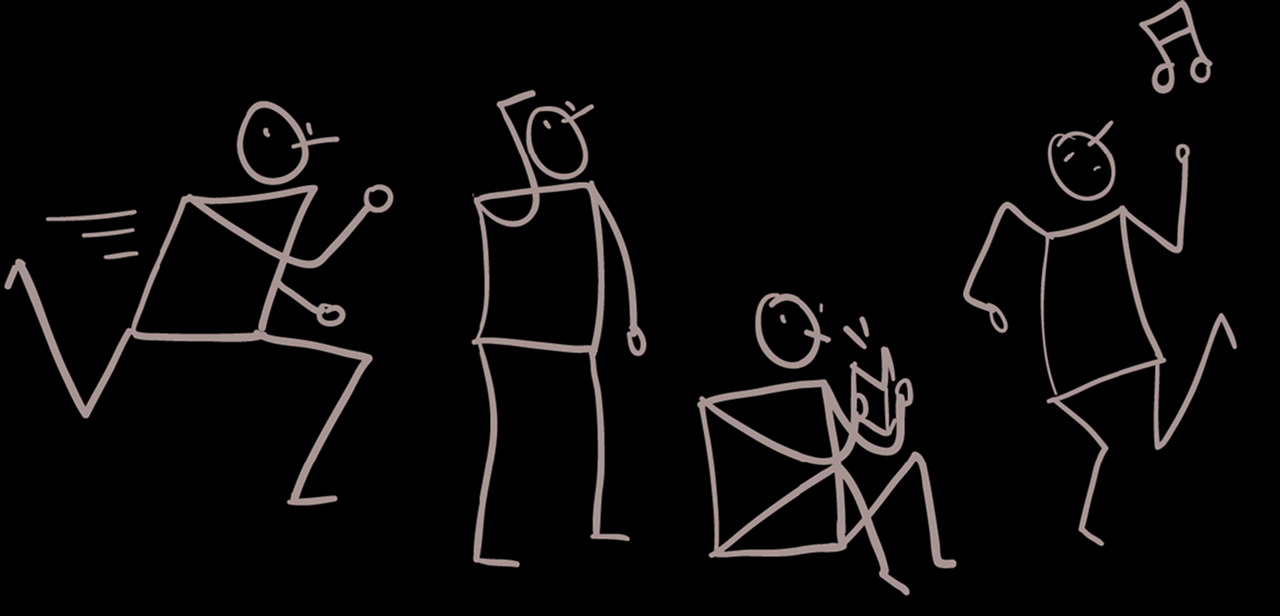You are reading the book Wicked Problems, published by Jon Kolko in 2011.
Skills for the Social Entrepreneur
Public Making
Talking a situation into existence is what happens during most corporate meetings. But once the meeting is over, the discussion thread disappears. Participants are left with various views of the conversation, and fallible memory and attention often create a large disconnect between what actually happened and what was perceived to have happened. In fact, it's often as if the conversation never happened at all; meetings are commonly held to rehash decisions that were thought to have already been made.
We designers offer a solution for this flawed form of sensemaking, as we capture, understand, and critique our ideas by continually building artifacts—externalizations—of them. These artifacts act as a stake in the ground, a declaration of an idea ready for sharing or critiquing. In some contexts, the artifact also acts as evidence because it provides a concrete representation of decisions, discussions, and other communal activities.
This externalization of ideas can be thought of as prototyping. Situations, organizations and environments are sketched into existence, creating a collaborative environment for further iteration and design. The prototype acts as a working representation of an idea. As the idea changes, so does the prototype. Prototypes can include diagrams, sketches, or more finished visualizations. For example, industrial designers and architects, who deal with space and form, may build foam models of hairdryers to study how a user holds the device, or foamcore models of a physical space to achieve the best placement for various rooms or objects. Graphic designers create prototypes of brochures, pamphlets, and posters for trial, critique, and a better understanding of the experiential qualities of the artifact. But you also can build prototypes for non-physical things, such as services or interactions. These prototypes may require more planning and consideration than a physical prototype, but it's worth it. They offer designers the ability to experience things over time and react to these experiences in further iterations. There are three easy ways to spark this form of public making: sketching, role play, and storytelling.
Sketching, Publicly
One of a designer's most important skills is the ability to visualize what does not yet exist. This visualization—commonly called daydreaming—is usually done within the confines of ones thoughts. When the daydream is over, the vision is gone. A memory may remain, but without a tangible, discussable, actionable artifact, the future state disappears. Sketching is one way to capture this envisioned future state and communicate it to other people. Sketching serves several purposes:
- Sketching is fast. A good sketch can be produced almost as quickly as someone can describe an idea.
- A sketch can be easily changed. As an idea grows, a sketch can grow with it; ideas can be crossed out and sketched again; as an idea becomes more detailed, so too can the sketch.
- A sketch provides a log, so it can be referenced at any time. This log can be used to remember, to provide clarity, or to settle disagreements. For those involved, this log is a dynamic reference to a conversation. Each mark on the page is literally a bookmark to a point in time, and by "walking through the sketch," one can often recall decision rationales and alternative points of view.
Less obvious benefits of public sketching:
- Sketching commands respect. A sketch becomes a powerful political tool for advancing an agenda. A sketch can be vivid and quickly understandable. And because of the rarity of sketching in our culture, sketches stand out from written reports or presentations.
- Sketching holds attention. As a sketch comes to life, those watching become engrossed in the process of making. They tend to feel more connected with the subject matter and the narrative of creation.
- The sketcher becomes the center of power. The person holding the pen can choose what to sketch, how to envision it, what priority to give it, and the way it connects to other elements. In politically challenging situations, the power of this role lasts long after the sketch is finished because the sketch remains.
You'll gain the confidence you need to sketch in a public setting (on a whiteboard or a large sheet of paper) through practice and continual critique and refinement. Start practicing by considering how to sketch any conversation you have as it happens. Carry a sketchbook with you to practice describing things visually and in front of (and in cooperation with) other people.
Sketching People, by Designer Ahmed Riaz
One of the most valuable sketch subjects is people. Putting the human at the center of a design helps you and decision-makers to empathize with people. A sketch can be in any medium as long as it is a) not precious (the designer has no quams with throwing it away), b) quick, and c) useful. It can be on paper (such as the notebooks of Leonardo da Vinci or Jim Henson) or video (with YouTube or Vimeo) or in software (with tools such as Flash or processing prototypes), form (with foam or combined found objects), or even electronics (with a tool such as Arduino). A sketch is not meant to stand alone; it often needs a person to interpret it. That's because a sketch is often purposely vague in some areas so it can be more articulate in other areas.
Here's a quick way to draw a person.

Draw the body as a rectangle. The body is the largest part of the body, and the type of rectangle you draw will represent the character of the whole figure. For example, you can draw a flighty rectangle to show movement, a flirty rectangle to demonstrate a light touch, or a sinister rectangle to show anger.
Draw an oval for the head. The shape of the oval begins to give emotional weight to the figure.
Ground the figure with legs and feet. Think of the legs as wires coming from the two bottom corners of the rectangle. You can bend the wires into various shapes to suggest the figure's movement.
Draw the arms. Also think of them as wires. Draw mitten hands, which are most important for describing what the figure is feeling or doing.
Now practice sketching figures in a variety of poses:


Role Play
Sometimes called method acting, role play is another public approach to design because it happens with (and often in front of) other people. A group acts out a particular situation, taking on the roles of those involved and using these roles to filter actions and responses. The method requires the actors to take on enough of the personality of their representative users that they can respond quickly and authentically. For many designers, role play isn't a conscious activity that's easily methodized; designers often don't even know they are doing it. Consider this example of two designers working through details of a text-based donation system:
Jeremiah: I think it's going to be a little awkward, considering that most panhandling happens at intersections.
Anne: Well, if I'm driving and you are on the corner [she pretends to move an invisible steering wheel]... if I see your sign, and it has your number on it [Jeremiah immediately holds up an invisible sign]...
Jeremiah: Hi! Could you spare some change?
Anne: Sure, here you go [motions to hand him some change].
Jeremiah: No, no—text it to me, here, see? [points at sign].
Anne, breaking character: Yeah, that's weird because it eliminates the human interaction. I wanted to just give you money because that's what I'm used to.
Jeremiah: Right, and you probably wouldn't even read my sign because it's usually just Sharpie on a piece of cardboard. What if I had a completely different kind of sign or something to hand to you?
In this example, the designers seamlessly enter into a character, and then quickly extract themselves from the situation so they can understand and judge it. In just a few seconds, they identified social barriers to a design idea, and Jeremiah started thinking of alternatives. Because Jeremiah and Anne had an existing relationship with one another, neither one had to explain what was going on. Instead, they simply started acting, a form of prototyping a situation in real time, to work through the details of a human-to-human interaction.
Telling Stories
A compelling narrative creates a vision that creates a trajectory for action. It demands a cohesive storyline or plot, actors doing credible and (when appropriate) incredible things, and the ability to introduce technological advancement only when appropriate.
Part of telling an impromptu story is the ability to quickly envision an alternative future, and arrive at that future in a way that's engaging. A "design idea" is not a design—it's simply the initial spark or seed of a larger narrative. It's important to bring the design idea to life by relating it to people, situations, and emotions. Consider these examples:
It would be great if we had a mobile-phone app that allowed...
...consumers to scan their produce in the grocery store and identify where it came from.
...voters to scan a candidate's name in the voting booth and learn about their position on particular issues.
...vehicle owners at a repair shop to scan a repair estimate and find out how much the same repair would cost at other shops.
All three examples are "design ideas," but none of the examples are complete narratives. How would consumers, voters, or vehicle owners know about the applications? How would they remember to use the application in any of the contexts? How would they overcome the social stigma of using an application in a community setting? How would the fruit, voting booth, or estimate be recognized—would it have a QR (quick response) code? How would the QR code get there? What's the incentive for the service provider? Would it work only on expensive smartphones? Who would update the content? Who would pay for it?
Answering such questions begins to round out the story—these questions, and their answers, make the narrative credible. Good storytellers learn to anticipate areas of incredibility, so they introduce enough detail to counter them. This doesn't mean they know the answer to every one of these details but that they offer enough of an answer that an audience can fill in the details themselves.
Being Proactive
An entrepreneurial approach is largely about attitude, and it requires doing things without necessarily having all of the information or much confidence in a given course of action. Many students may see a desired end state and even the steps needed to arrive at that state, but they may lack the discipline, focus, and sustained energy to arrive at their vision, and most important, to even start. Because of the quantity of things they have to do, they may find starting to be intimidating, which allows a natural state of entropy and procrastination to creep in.
Instead, foster proactivity by constantly articulating tactical steps: Make to-do lists, prioritize activities, do "just enough" for the time being, and focus on one thing at a time. All of this comes more easily to people who work in companies where meetings and run ins with colleagues in the halls prompt activity. In other environments, proactivity may require faking or forcing these prompts to action by setting artificial deadlines or establishing external meetings.
